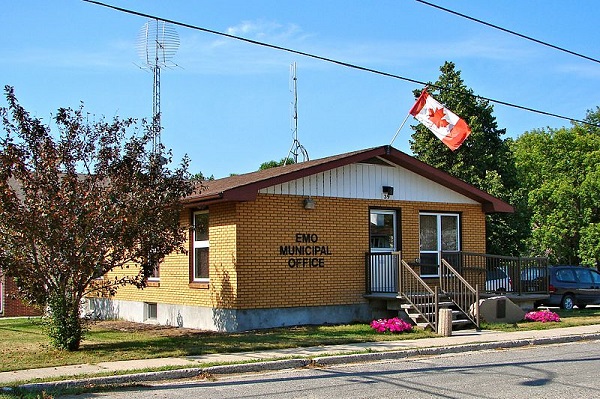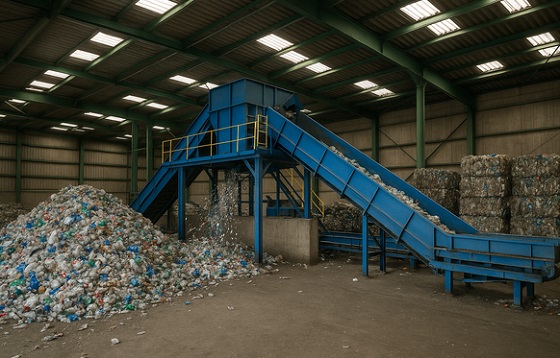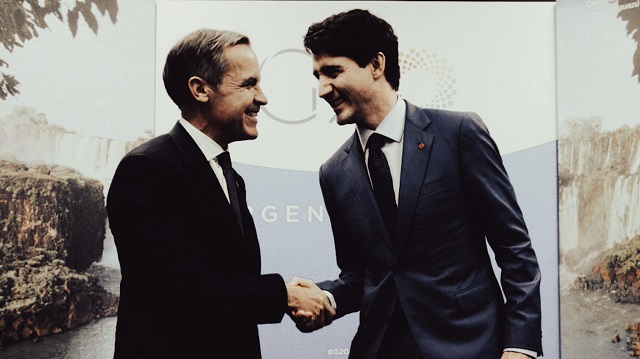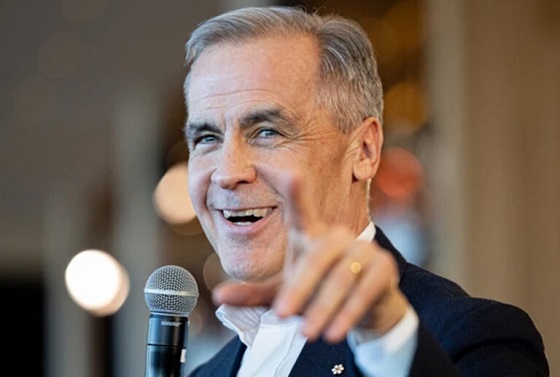National
Canadian town appeals ruling that forces them to pay LGBT group over ‘pride’ flag dispute

From LifeSiteNews
The irony of the ruling is that Emo’s town hall doesn’t even have a flagpole
A Canadian town has announced it will seek a “judicial review” regarding a decision that saw it being mandated by a tribunal to pay an LGBT group thousands of dollars because it refused to cave to activists’ demands by declaring June “Pride Month” and flying the related rainbow flag.
In a media statement Thursday, the town of Emo, Ontario, said it has “decided to seek judicial review of the decision of the Human Rights Tribunal of Ontario. As the matter is proceeding to the Divisional Court, we will not be commenting further at this time.”
The town noted that it wished “to state that it made a Declaration of Equality in 2022, which remains in effect today.”
“The Township recognizes the dignity and worth of all people, as well as the barriers of discrimination and disadvantage faced by human rights protected groups, including members of the LGBTQ2+ community,” said the town in its 2022 declaration.

As reported by LifeSiteNews, last month Mayor Harold McQuaker of Emo, Ontario, was ordered by an Ontario Human Rights Tribunal to pay local LGBT activist group Borderland Pride $5,000 for refusing to celebrate the LGBT agenda during the month of June. The town was also ordered to pay $10,000.
Specifically, the mayor and town had refused to cave to demands to fly the LGBT “Pride flag” and declare the month of June to be “Pride Month.”
After the mayor refused to pay, his bank account appears to have been garnished to pay for damages ordered against him by the tribunal.
McQuaker had publicly protested the tribunal’s orders, calling them a form of “extortion.” In a vulgar Facebook post, Borderland Pride claimed they were successful in forcing money from the mayor via the garnishing of his bank funds.
“Sure, sex is great, but have you ever garnished your mayor’s bank account after he publicly refused to comply with a Tribunal’s order to pay damages?” wrote the group on Facebook.
McQuaker previously had told the Toronto Sun, “I utterly refuse to pay the $5,000 because that’s extortion” and said he would not undergo the Ontario Human Rights Commission re-education course.
Ontario adjudicator Karen Dawson wrote in her decision against McQuaker that “$15,000 is an appropriate level of compensation for Borderland Pride’s injury to dignity, feelings and self-respect.”
The irony of the ruling is that Emo’s town hall doesn’t even have a flagpole.
Emo is not the only town in Canada that has recently banned the flying of “Pride” flags from municipal buildings.
As reported by LifeSiteNews, residents of the Canadian town of Barrhead, Alberta, recently voted in a solid majority to pass a bylaw that will in effect ban pro-LGBT “Pride” themed designs from being displayed on public infrastructure, including such flags on government buildings and rainbow painted crosswalks.
Residents in the Alberta town of Westlock likewise passed a bylaw that bans all non-governmental flags from municipal buildings and mandates that crosswalks only be painted in the standard white-striped pattern.
The LGBT indoctrination in Canadian cities and towns via “Pride month,” which often includes flags and painted crosswalks, has been described by LifeSiteNews columnist Jonathon Van Maren as “not a ‘celebration of Pride,’” but as “an assertion of ownership, a declaration of dominance” over “public spaces.”
Van Maren recently observed celebrated the Emo mayor, writing, “Harold McQuaker isn’t having any of it (LGBT activists demands). And we need more like him.”
Business
Ottawa’s Plastics Registry A Waste Of Time And Money

From the Frontier Centre for Public Policy
By Lee Harding
Lee Harding warns that Ottawa’s new Federal Plastics Registry (FPR) may be the most intrusive, bureaucratic burden yet. Targeting everything from electronics to fishing gear, the FPR requires businesses to track and report every gram of plastic they use, sell, or dispose of—even if plastic is incidental to their operations. Harding argues this isn’t about waste; it’s about control. And with phase one due in 2025, companies are already overwhelmed by confusion, cost, and compliance.
Businesses face sweeping reporting demands under the new Federal Plastics Registry
Canadian businesses already dealing with inflation, labour shortages and tariff uncertainties now face a new challenge courtesy of their own federal government: the Federal Plastics Registry (FPR). Manufacturers are probably using a different F-word than “federal” to describe it.
The registry is part of Ottawa’s push to monitor and eventually reduce plastic waste by collecting detailed data from companies that make, use or dispose of plastics.
Ottawa didn’t need new legislation to impose this. On Dec. 30, 2023, the federal government issued a notice of intent to create the registry under the 1999 Canadian Environmental Protection Act. A final notice followed on April 20, 2024.
According to the FPR website, companies, including resin manufacturers, plastic producers and service providers, must report annually to Environment Canada. Required disclosures include the quantity and types of plastics they manufacture, import and place on the market. They must also report how much plastic is collected and diverted, reused, repaired, remanufactured, refurbished, recycled, turned into chemicals, composted, incinerated or sent to landfill.
It ties into Canada’s larger Zero Plastic Waste agenda, a strategy to eliminate plastic waste by 2030.
Even more troubling is the breadth of plastic subcategories affected: electronic and electrical equipment, tires, vehicles, construction materials, agricultural and fishing gear, clothing, carpets and disposable items. In practice, this means that even businesses whose core products aren’t plastic—like farmers, retailers or construction firms—could be swept into the reporting requirements.
Plastics are in nearly everything, and now businesses must report everything about them, regardless of whether plastic is central to their business or incidental.
The FPR website says the goal is to collect “meaningful and standardized data, from across the country, on the flow of plastic from production to its end-of-life management.” That information will “inform and measure performance… of various measures that are part of Canada’s zero plastic waste agenda.” Its stated purpose is to “keep plastics in the economy and out of the environment.”
But here’s the problem: the government’s zero plastic waste goal is an illusion. It would require every plastic item to last forever or never exist in the first place, leaving businesses with an impossible task: stay profitable while meeting these demands.
To help navigate the maze, international consultancy Reclay StewardEdge recently held a webinar for Canadian companies. The discussion was revealing.
Reclay lead consultant Maanik Bagai said the FPR is without precedent. “It really surpasses whatever we have seen so far across the world. I would say it is unprecedented in nature. And obviously this is really going to be tricky,” he said.
Mike Cuma, Reclay’s senior manager of marketing and communications, added that the government’s online compliance instructions aren’t particularly helpful.
“There’s a really, really long list of kind of how to do it. It’s not particularly user-friendly in our experience,” Cuma said. “If you still have questions, if it still seems confusing, perhaps complex, we agree with you. That’s normal, I think, at this point—even just on the basic stuff of what needs to be reported, where, when, why. Don’t worry, you’re not alone in that feeling at all.”
The first reporting deadline, for 2024 data, is Sept. 29, 2025. Cuma warned that businesses should “start now”—and some “should maybe have started a couple months ago.”
Whether companies manage this in-house or outsource to consultants, they will incur significant costs in both time and money. September marks the first phase of four, with each future stage becoming more extensive and restrictive.
Plastics are petroleum products—and like oil and gas, they’re being demonized. The FPR looks less like environmental stewardship and more like an attempt to regulate and monitor a vast swath of the economy.
A worse possibility? That it’s a test run for a broader agenda—top-down oversight of every product from cradle to grave.
While seemingly unrelated, the FPR and other global initiatives reflect a growing trend toward comprehensive monitoring of products from creation to disposal.
This isn’t speculation. A May 2021 article on the World Economic Forum (WEF) website spotlighted a New York-based start-up, Eon, which created a platform to track fashion items through their life cycles. Called Connected Products, the platform gives each fashion item a digital birth certificate detailing when and where it was made, and from what. It then links to a digital twin and a digital passport that follows the product through use, reuse and disposal.
The goal, according to WEF, is to reduce textile waste and production, and thereby cut water usage. But the underlying principle—surveillance in the name of sustainability—has a much broader application.
Free markets and free people build prosperity, but some elites won’t leave us alone. They envision a future where everything is tracked, regulated and justified by the supposed need to “save the planet.”
So what if plastic eventually returns to the earth it came from? Its disposability is its virtue. And while we’re at it, let’s bury the Federal Plastics Registry and its misguided mandates with it—permanently.
Lee Harding is a research associate for the Frontier Centre for Public Policy.
2025 Federal Election
Canada is squandering the greatest oil opportunity on Earth

Canada has 3X US oil reserves but less than 40% the production. Why? Anti-oil politicians like Mark Carney who say they’re protecting Earth’s coldest country from global warming.
- Canada has 170 billion barrels of proven oil reserves—by far the largest of any free country. And its producers can profit at $44 oil, vs. >$57 for US shale.
- Canadian oil production is also continuing to get cheaper. Oil sands operating costs have dropped 19% over the past five years, and the industry—which is still fine-tuning how to coax oil-like bitumen out of oil sands—has substantial room for further cost reductions.
- In addition to its massive proven oil reserves, Canada also has massive unexplored oil resources. Canada’s Northwest Territories may contain up to 37% of Canada’s total oil reserves, much of it light crude, which is even cheaper to extract and transport than bitumen from oil sands.
Canada is squandering this opportunity, with < 40% of US production and much slower growth
- Given Canada’s massive oil reserves and lower production costs, Canadian oil should have been growing far faster than US oil—on a path to producing even more oil than the US does.
Instead, Canada is totally squandering its oil opportunity, with less than 40% of US production and slower growth since 2010.
The lost opportunity is costing Canadians 100s of billions of dollars a year—and undermining global security
- In 2023, oil sands directly contributed C$38 billion to GDP—while total economic impact was 100s of billions of dollars. It could have been far, far greater.
- Canada’s oil underproduction is undermining both Canadian prosperity and global security. E.g., Europe’s dependence on Russian oil triggered an energy crisis after Russia invaded Ukraine. By doubling its oil production, Canada could make oil dictators weaker, the free world stronger—and Canada more powerful.
The cause: False climate ideas have led Canada to senselessly strangle its oil industry
Canada is squandering its oil opportunity by preventing its abundant oil from being transported to world markets
- With 3X US oil reserves but 1/8 the people, Canada can produce far more oil than it can use. So it needs a lot of transportation. Yet it wages war on pipelines, which are the cheapest, fastest, safest way to transport oil.
- In 2016, the Canadian government rejected the Northern Gateway pipeline from Alberta to B.C. after nearly a decade of review, citing insufficient Indigenous consultation. The pipeline would have carried 535K barrels of oil per day to Asia-Pacific markets, generating ~C$300B in GDP over 30 years.
- To make matters worse, several years after the cancellation of the Northern Gateway pipeline, Canadian Parliament passed Bill C-48 (the Oil Tanker Moratorium Act), banning large oil tankers from calling at northern B.C. ports and effectively shutting the door on any future pipeline to that region.
- In 2017, TC Energy canceled their Energy East pipeline project after the Canadian government demanded they calculate all of its indirect GHG emissions. The pipeline would have carried 1.1M barrels per day of Albertan and Saskatchewan oil to Eastern Canada, generating ~C$55B in GDP over 20 years.
- The Trans Mountain Expansion (TMX), operational in 2024, is Canada’s only new major pipeline in over a decade. Proposed in 2012, it barely survived years of political hurdles, progressing only after the federal government bought it in 2018. By completion, its costs had ballooned from the projected C$7.4B to C$34B.
- The main government-created obstacle for pipelines in Canada is the onerous federal “environmental review” process called the Impact Assessment Act (IAA), and before that, its precursor, the Canadian Environmental Assessment Act (CEAA).
- Under the Impact Assessment Act, the Canadian government can effectively veto a pipeline project by deeming it not in the “public interest,” as determined by factors including “sustainability,” alignment with climate goals, and impacts on Indigenous groups—but not economic benefits (!)
- Before the Impact Assessment Act was instituted in 2019, pipelines faced similarly onerous environmental reviews under its precursor, the Canadian Environmental Assessment Act (CEAA). Under CEAA, government could veto projects it judged to cause “significant adverse environmental effects,” a vague and open-ended criteria.
- Even if a pipeline project isn’t formally rejected by the Canadian government, the environmental review process can stretch on for years—often causing projects to collapse from escalating costs or investors withdrawing amid uncertainty. This is exactly what happened with the Energy East pipeline in 2017.
- If Canada built ample transportation, it would have the potential to produce even more oil than the US does and sell it around the world. Instead, its production is < 40% of the US’s, and 97% of its exports are to the US—at below-market prices.
Canada is also strangling oil investment, production, and refining
- Canada isn’t just strangling oil transport, it’s sabotaging oil at every stage—from Mark Carney’s proposed emissions cap to “Clean Fuel Regulations” to EV mandates to drilling bans to refinery restrictions.
- Investment in Canadian oil plunged over 50% (C$76B to C$35B) between 2014-2023—with investors pointing to regulatory uncertainty, inconsistencies, and compliance costs as major barriers to investments.
- A further looming threat to oil investment is the proposed cap on oil and gas sector GHG emissions. If implemented, as promised by Mark Carney’s government, this proposal will require the oil industry to reduce its GHG emissions to 35% of the 2019 level, which would significantly discourage investment and production.
- The Clean Fuel Regulations (CFRs), which mandate that Canadian fossil fuel producers reduce the emissions from fuels to 15% lower than 2016 levels by 2030, harms Canadian oil production by significantly increasing the cost of production and thus decreasing the domestic demand for gasoline and diesel.
- Canada’s EV mandate, which requires that 20% of vehicles sold in 2026, at least 60% of vehicles sold in 2030, and all new vehicles sold in 2035 are electric, harms Canadian oil production by greatly reducing the demand for gasoline and diesel.
- Canada’s consumer carbon tax, which until earlier this month imposed a fee of C$80 per ton of CO2, harmed Canadian oil production by raising gasoline prices by 17.6 cents per litre, thereby decreasing demand. Though this tax has been repealed, gasoline and diesel remain subject to the industrial carbon tax.
- In addition to measures that heavily disincentivize oil production, the federal government also directly limits production through moratoria on oil development on Canada’s Pacific and Arctic coasts, blocking access to hundreds of billions of barrels of oil.
- On top of Canada’s oil underinvestment and underproduction, Canadian oil refining has stagnated, with Canada’s refineries able to process less than half of the oil it produces and only one new refinery built since the 1980s.
The leading stranglers of Canadian oil, such as Trudeau and Carney, say they are protecting Canada and the world from a climate crisis
- The root cause of Canada’s squandered oil opportunity is leaders’ belief that world’s coldest country must stop global warming at all costs.
That’s why they advocate pursuing “net zero” by 2050—which necessarily means destroying Canada’s domestic oil industry.
- Canada has embraced climate catastrophism for over 3 decades now. For example, it was one of the original signatories of the UN Framework Convention on Climate Change (UNFCCC) in 1992. The UNFCCC has been the driving force behind “net zero” policies.
- Justin Trudeau took Canadian anti-oil policy to a new level, making the destruction of Canada’s oil opportunity a central focus: “We need to phase [oil sands] out,” he said in 2017, “We need to manage the transition off of our dependence on fossil fuels.”
- While Trudeau’s opposition to Canadian oil and therefore its economy is well-known, most Canadians do not know that Mark Carney is a far more committed opponent of Canadian oil than Justin Trudeau ever was. Indeed, Carney is one of the world’s leading “net zero” advocates.
- The last several decades of Mark Carney’s career have been focused on pressuring countries like Canada to adopt “net zero” policies that have proved ruinous. He did this as the head of the Bank of Canada and the Bank of England, and as the UN Special Envoy for Climate Action.
- Mark Carney’s past statements on climate include:
“investing for a net-zero world must go mainstream” (2019)
“those that fail to adapt [to net-zero] will cease to exist” (2019)
“build a financial system in which every decision takes climate change into account” (2021)
- Myth: Mark Carney used to be for carbon taxes but has changed his mind, as shown by his elimination of Canada’s carbon tax.
Truth: Carney is still for carbon taxes—because he is still for the net-zero agenda that requires taxing CO2 along with all other means to eliminate fossil fuels.
But while climate change is real, it is not a crisis—thanks to increasing resilience—nor is it addressed by unilateral Canadian sacrifice
- Far from facing a catastrophic climate crisis, Canada and the world are safer than ever from climate.
The global rate of climate disaster-related deaths has fallen 98% in the last 100 years—thanks to increasing climate resilience from reliable, affordable energy, including oil.
- Myth: Even if climate-related disaster deaths are down, climate-related damages are way up, pointing to a bankrupting climate future.
Truth: Even though there are many incentives for climate damages to go up—preferences for riskier areas, government bailouts—GDP-adjusted damages are flat.
- Sacrificing Canadian oil won’t make the coldest country in an increasingly climate-resilient world safer from global warming—since countries like China and India will never follow suit. What it will do is leave Canada far poorer, weaker, and more endangered from lack of energy.
The solution: Unleashing responsible oil development will make Canada rich, resilient, and secure
The rational path forward on climate is to embrace prosperity, which drives resilience and energy innovation
- Canada is safer than ever from climate, and other countries won’t cut emissions until it’s truly cost-effective to do so. The path forward is to embrace prosperity.
- The more prosperous Canada is, the more it can make itself more and more resilient to all manner of climate dangers. And the more prosperous Canada is, the more it can innovate new forms of energy that have the long-term prospect of outcompeting fossil fuels.
The number one path to Canadian prosperity is unleashing responsible development in the oil industry and other energy industries
- Canada must finally seize its enormous oil opportunity, unleashing investment, production, refining, and transport from irrational restrictions. Only then can Canada can deliver oil to eager markets worldwide.
- Canada should renounce its pledge to achieve “net zero by 2050” by repealing the Net-Zero Emissions Accountability Act where it is enshrined and withdrawing from the Paris Agreement. This will massively increase investor certainty about the future viability of the oil industry.
- Canada should reject the proposed GHG emissions cap for the oil industry. Canadian provinces that have their own carbon taxes and emission credit trading schemes should eliminate them too. This will improve investor expectations about the oil industry’s future viability.
- Canada should repeal the Impact Assessment Act (IAA) and replace it with a framework that minimizes the cost and duration of reviews and enshrines clear and narrow criteria for rejecting projects. This will help build more oil pipelines and reduce investor uncertainty about environmental regulations.
- Canada should revise the Canadian Energy Regulator Act (CERA) by limiting the certification review of the covered oil pipeline projects to the question of whether there is sufficient proven demand for the oil they are planning to transport. This will expedite pipeline approval.
- Canada should repeal the Oil Tanker Moratorium Act (Bill C-48), which bans large oil tankers off the northern and central coast of British Columbia. This will open the door to building pipelines to B.C. that can transfer oil to crucial Asian markets.
- Canada should repeal the Clean Fuel Regulations (CFR) and the EV mandate. This will boost investor confidence in oil by increasing both current and anticipated domestic demand for oil-derived fuels.
- Canada should repeal the federal moratoria on offshore oil drilling on the Pacific Coast and in the Canadian Arctic. This will unlock up to hundreds of billions of barrels of Canadian oil.
- To stop squandering the world’s greatest energy opportunity, Canada must start electing leaders who value Canadian energy, and stop electing leaders with a proven track record of destroying it.
Daniil Gorbatenko, Steffen Henne, and Michelle Hung contributed to this piece.
“Energy Talking Points by Alex Epstein” is my free Substack newsletter designed to give as many people as possible access to concise, powerful, well-referenced talking points on the latest energy, environmental, and climate issues from a pro-human, pro-energy perspective.
-

 2025 Federal Election2 days ago
2025 Federal Election2 days agoThe Federal Brief That Should Sink Carney
-

 2025 Federal Election2 days ago
2025 Federal Election2 days agoHow Canada’s Mainstream Media Lost the Public Trust
-

 Media1 day ago
Media1 day agoCBC retracts false claims about residential schools after accusing Rebel News of ‘misinformation’
-

 John Stossel2 days ago
John Stossel2 days agoClimate Change Myths Part 2: Wildfires, Drought, Rising Sea Level, and Coral Reefs
-

 Bjorn Lomborg1 day ago
Bjorn Lomborg1 day agoNet zero’s cost-benefit ratio is CRAZY high
-

 2025 Federal Election1 day ago
2025 Federal Election1 day agoMark Carney Wants You to Forget He Clearly Opposes the Development and Export of Canada’s Natural Resources
-

 2025 Federal Election1 day ago
2025 Federal Election1 day agoPolice Associations Endorse Conservatives. Poilievre Will Shut Down Tent Cities
-

 2025 Federal Election23 hours ago
2025 Federal Election23 hours agoCarney’s Hidden Climate Finance Agenda









